In mathematics, inverse trigonometric functions are also known as arcus functions or antitrigonometric functions The inverse trigonometric functions are the inverse functions of basic trigonometric functions, ie, sine, cosine, tangent, cosecant, secant, and cotangent It is used to find the angles with any trigonometric ratio Trigonometry Trigonometric Identities and Equations Fundamental Identities 1 Answer P dilip_k Letsin−1x = θ ⇒ x = sinθ = cos( π 2 − θ) ⇒ cos−1x = π 2 − θ = π 2 − sin−1x ∴ sin−1x cos−1x = π 2 Answer link Check the below NCERT MCQ Questions for Class 12 Maths Chapter 5 Continuity and Differentiability with Answers Pdf free download MCQ Questions for Class 12 Maths with Answers were prepared based on the latest exam pattern We have provided Continuity and Differentiability Class 12 Maths MCQs Questions with Answers to help students understand the
Tinkutara Equation Editor Math Forum Question
π/2-sin^-1x
π/2-sin^-1x-The same is true for the four other trigonometric functions By observing the sign and the monotonicity of the functions sine, cosine, cosecant, and secant in the four quadrants, one can show that 2 π is the smallest value for which they are periodic (ie, 2 π is the fundamental period of these functions)When we try to get range of inverse trigonometric functions, either we can start from π /2 or 0 (Not both) If we start from π /2, the range has to be restricted in the interval π /2, π /2, Length = 180° If we start from 0, the range has to be restricted in the interval



1 3 Trigonometric Functions
If sin 1 x sin 1 y = 2π/3, then the value of cos 1 x cos 1 y is (a) 2π/3 (b) π/3 (c) π/2 (d) π Next Question 7→ Class 12;Then sintheta=x now, sinθ = cos( π/2 θ)=x and cos^(1)x= π/2 θ therefore, sin^(1)xcos^(1)x= θπ/2 θ= π/22 π Z π 0 f(x)sin(nx)dx Using the formulas for the Fourier coefficients we have b n = 2 π Z π 0 xsin(nx)dx = 2 π (π −x cosnx n π 0 − Z 0 (− cosnx n)dx) = 2 π (1 n −πcosnπsinnx n2π 0) = − 2 n cosnπ = ˆ −2/n if n is even 2/n if n is odd The Fourier Series of f is therefore f(x) = b 1 sinxb 2 sin2xb 3 sin3x
sin−1(1−x)−2sin−1x=π/2 , then x is equal to (A) 0,1/2 (B) 1,1/2 0 (D) 1/2The sum of inverse sines of both values is equal to 60 ∘ and it is expressed in mathematical form sin − 1 x sin − 1 2 x = π 3 The inverse trigonometric equation can be solved by applying the sum rule of inverse sine functions to obtain the value of x but it makes the simplification more complicated in this case 01∫2sec xsec x12sec x2dx 12cosec xcot xC 2cosec xcot;
If sin−1xsin−1y=π2then cos−1xcos−1y is equal to π2 π4 If s i n − 1 x s i n − 1 y = π 2 ,then c o s − 1 x c o s − 1 y is equal to AClick here👆to get an answer to your question ️ If sin ^1x sin ^1y = pi2 , then x^2 is equal toTrue The sine and cosine functions are sinusoidal functions That means when the graph of y = cos x is shifted to the right π/2 units to obtain the graph of y = cos(xπ/2), the graph is same as the graph of y = sin x




Trigonometric Functions




Proof Of Arcsinx Arccosx P 2 Arctanx Arccotx P 2 And Arccosecx Arcsecx P 2 Youtube
Related Questions Let fx=1xInxex then its primitive with respect to x is; The value of the cosine function is positive in the first and fourth quadrants (remember, for this diagram we are measuring the angle from the vertical axis), and it's negative in the 2nd and 3rd quadrants Now let's have a look at the graph of the simplest cosine curve, y = cos x (= 1 cos x) π 2π 1 1 x yAnswer (1 of 2) Let \sin^{1} (x) = \alpha \implies x = \sin \alpha Let \sin^{1} (2x) = \beta \implies 2x = \sin \beta Consider the following diagram for other




Sin 1x Sin 1y Pi 2 Then Find Dy Dx Brainly In




Trigonometric Functions
Misc 16Solve sin−1(1 – x) – 2sin−1 x = π/2 , then x is equal to(A) 0, 1/2 (B) 1, 1/2 0 (D) 1/2 sin−1 (1 – x) – 2sin−1 x = π/2 –2sin−1 x = 𝝅/𝟐 – sin−1 (1 – x) − 2sin−1 x = cos−1 (1 – x)We know that sin−1 x cos−1x = 𝝅/𝟐Replace x by (1 − x) sin1 (1 −Student Solutions Manual (Chapters 111) for Stewart's Single Variable Calculus (7th Edition) Edit edition Solutions for Chapter 66 Problem 18E (a) Prove that sin−1x cos−1x = π/2(b) Use part (a) to prove Formula 6 Sin^1x sin^1y=π/2 1 See answer Advertisement Advertisement gouravdhiman306 is waiting for your help Add your answer and earn points kartikbhardwaj19 kartikbhardwaj19 Answer Sin1x cos1x = \Pi/2 And Given is that Sin1x Sin1y = \Pi/2 Therefore , we get that




Q1 If Sin 1 X Sin 1 Y Pi 2 Then D Y D X Is Equal To A X Y B Cdot X Y C Y X D Y X
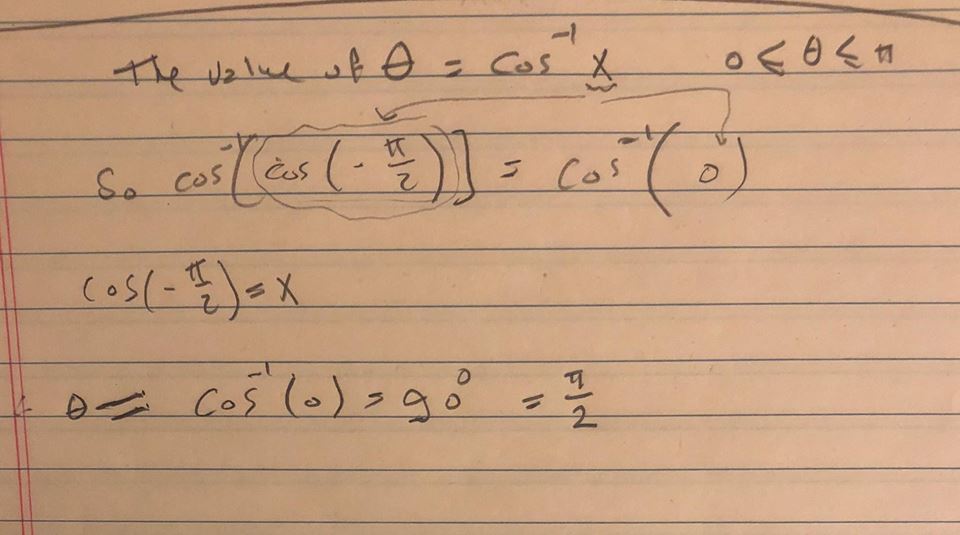



How Do You Evaluate Cos 1 Cos Pi 2 Socratic
The inverse circular functions are defined as below 1 sin–1 (–x) = –sin–1 x, –1 < x < 1 Odd function 2 cos–1 (–x) = π –cos–1 x, –1 < x < 1 Neither odd nor even 3 tan–11 (–x) = –tan–1 x, x ∈ R Odd function 4 cot–1 (–x) = π – cot–1 x, x ∈ R Neither odd nor even 5 cosec–1 (–x) = –cosec5 INTEGRATION TECHNIQUES = Z 1 0 y3/2dy = (2/5)y5/2 1 0 = 2 5 5B16 Z 1 −1 tan−1 xdx 1x2 Z tan−1 1 tan−1 (−1) udu (u = tan−1 x, du = dx/(1 x2) Z π/4 −π/4 udu = u2 2 π/4 π/4 = 0 (tanx is odd and hence tan−1 x is also odd, so the integral had better be 0) 5C Trigonometric integralsIf A is a matrix of order m × n and B is a matrix such that A B ′ and B ′ A are both defined, the order of the matrix B is 2 The value of ∫ e x ( 1 x) d x cos 2 ( e x x) is equal to 3 If x y z are not equal and ≠ 0, ≠ 1 the value of log 4
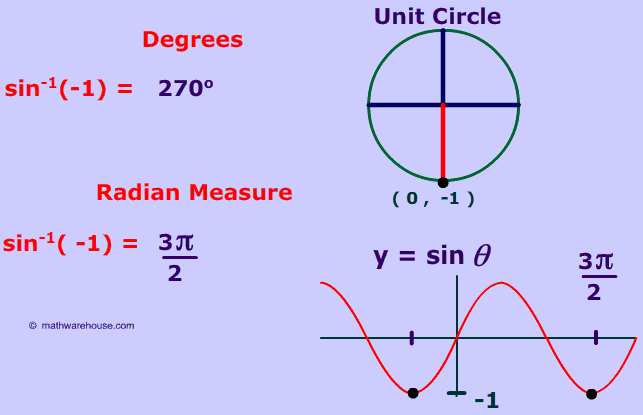



Inverse Sin 1 And 1 Special Cases Of The Inverse Of Sine Function
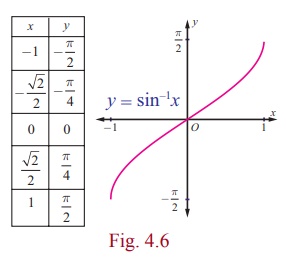



Sine Function And Inverse Sine Function Definition Graph Properties Solved Example Problems
Let Fx=∫esin−1x1−x√1−x2dxandF0=1ifF12=k√3ex6π then k =Evaluating sin 1 x Example Evaluate sin 1 p 2 using the graph above I We see that the point p 1 2;Click here👆to get an answer to your question ️ sin^1(1 x) 2sin^1x = pi2 , then x is equal to
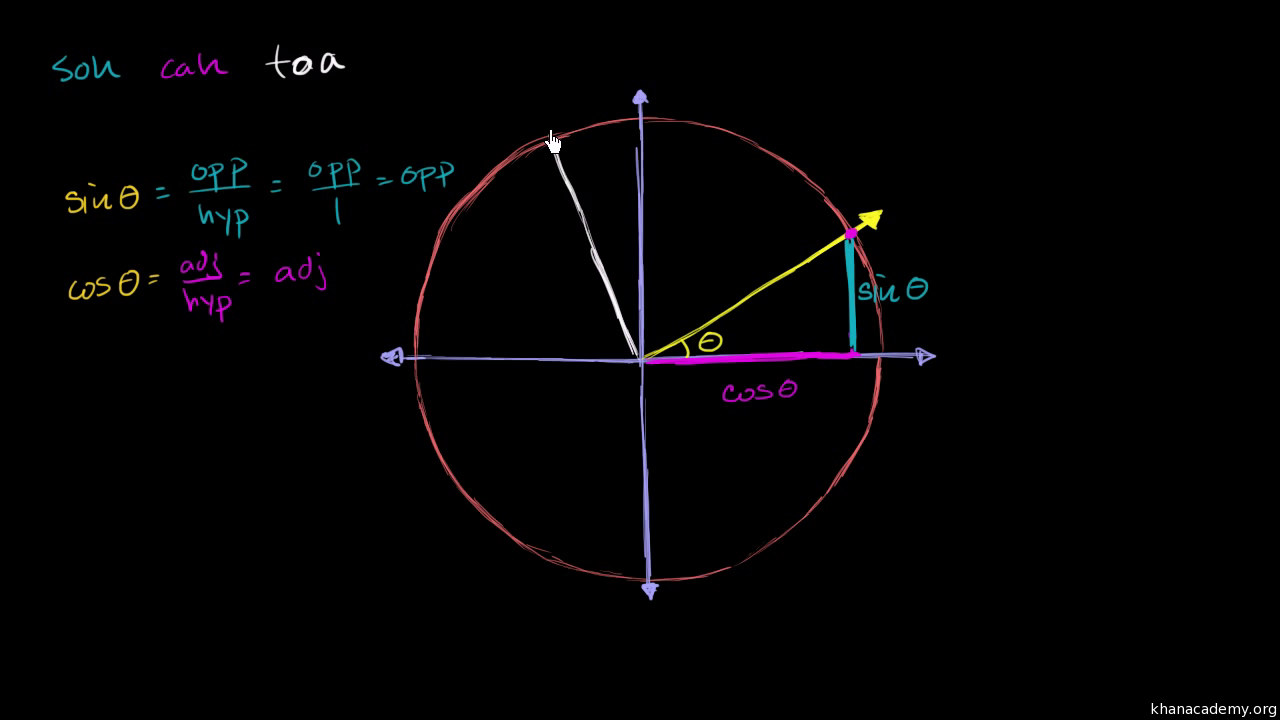



Sine Cosine Identities Periodicity Video Khan Academy




Inverse Circular Function Study Material For Iit Jee Askiitians
Inverse sine is written \(y = \sin^{–1} x\) or \(y = \arcsin x\) where x is the ratio of the coordinates on a circle and y is the angle The domain is –1, 1 and the range is \(\left–\frac{π}{2}, \frac{π}{2}\right\) To evaluate, find the ratio on the unit circle and find the corresponding angle Remember the angle must be between5 The simplified expression of sin (tan 1 (x)) for any real number x is given by 6 7 8 If , then is equal to 9 A particle is projected from a point O with velocity u at an angle of 60 o with the horizontal When it is moving in a direction at right angles to its direction at O, its velocity then isStudents please watch till end and subscribe please for more if you satisfyplease support me If you have anythen please comment me and I will try to give A



Sin 1 1 X 2sin 1x P 2 Then X Is Equal To Sarthaks Econnect Largest Online Education Community
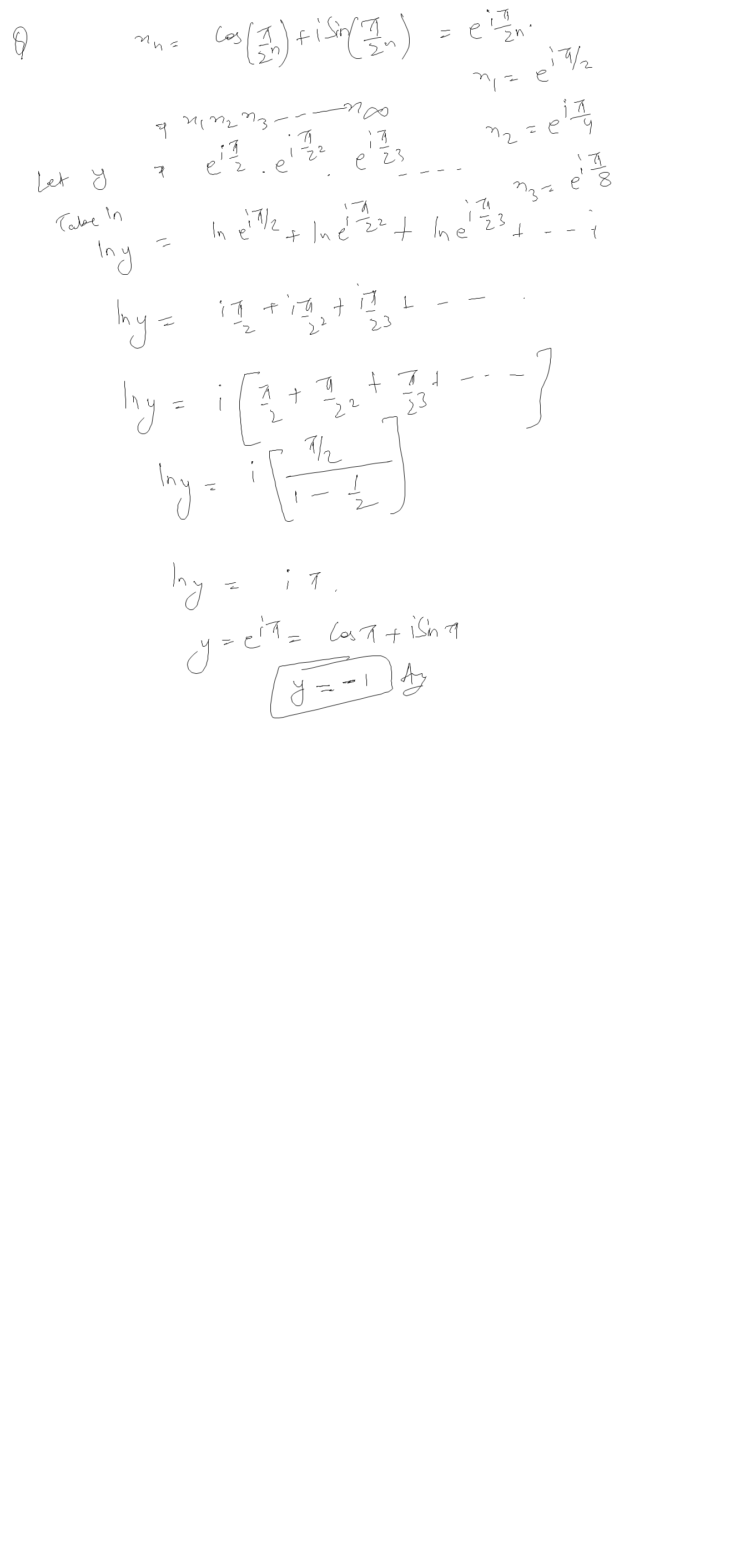



X N Cos P 2 N I Sin P 2 N N Is An Element Of N Then X 1 X Askiitians
Then cos−1 x cos−1 y is equal to 4 If sin−1 x = 2 sin−1 α has a solution, then 6Advanced Math questions and answers Show that the given set of functions is orthogonal on the indicated interval Find the norm of each function in the set (sin x, sin 3x, sin 5x, );If sin1(1 x) 2 sin1x = π2, then find the value of x Maharashtra State Board HSC Arts 12th Board Exam Question Papers 167 Textbook Solutions MCQ Online Tests 70 Important Solutions 1872 Question Bank Solutions Concept Notes & Videos 346 Time Tables 24 Syllabus



Graph Sine And Cosine Functions
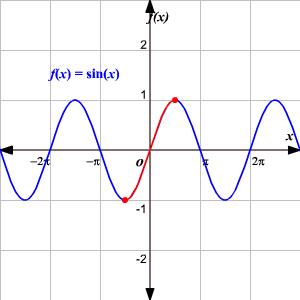



Inverse Trigonometric Functions
Sine calculator online sin(x) calculator This website uses cookies to improve your experience, analyze traffic and display adsThank you for registering One of our academic counsellors will contact you within 1 working day Please check your email for login detailsIf then the value of x is Choose the correct or the most suitable answer from the given four alternatives 1 The value of sin−1 (cos x), 0 ≤ x ≤ π is 2 If sin−1 x sin−1 y (2π/3) ;



Inverse Trigonometric Functions Precalculus Ii




Sin 1 1 X 2sin 1x Pi 2 Brainly In
Stack Exchange network consists of 178 Q&A communities including Stack Overflow, the largest, most trusted online community for developers to learn, share their knowledge, and build their careers Visit Stack ExchangeIf cos^1x cos^1y cos^1z = π, then prove that x^2 y^2 z^2 2xyz = 1 asked in Trigonometry by Vikky01 ( 418k points) inverse trigonometry Inverse Trigonometric Formulas Trigonometry is a part of geometry, where we learn about the relationships between angles and sides of a rightangled triangleIn Class 11 and 12 Maths syllabus, you will come across a list of trigonometry formulas, based on the functions and ratios such as, sin, cos and tanSimilarly, we have learned about inverse trigonometry concepts also



Math Purdue Edu




Sin 1 1 X 2sin 1 X Pi 2 Then X Is Equal To A 0 1 2 B 1 1 2 C 0 D 1 2 Youtube
The inverse trigonometric identities or functions are additionally known as arcus functions or identities Fundamentally, they are the trig reciprocal identities of following trigonometric functions Sin Cos Tan These trig identities are utilized in circumstances when the area of the domain area should be limited These trigonometry functions have extraordinary noteworthiness in EngineeringIf sin1 (x / 13) cosec1 (13 / 12) = π / 2, then the value of x is If sin1 x (x 2 / 2) (x 3 / 4) cos1 (x 2 (x 4 / 2) (x 6 / 4) ) = π / 2 For 0 x √2, then x = If sin1 a sin1 b sin1 c = π, then the value of a√(1 a 2) b √(1 b 2) c√(1 c 2) Add a comment 4 Draw a right triangle whose hypotenuse has length 1 and say the side of it opposite one of the angles, θ has length x Then the side of it adjacent to the other acute angle is that same side of length x The other acute angle is π / 2 − θ So θ = sin − 1 x and π / 2 − θ = cos − 1




Sine Function And Inverse Sine Function Definition Graph Properties Solved Example Problems



Www2 Imperial Ac Uk
E Solutions to 1801 Exercises 5 Integration techniques 5B13 u = x3, du = 3x2dx implies x2dx du tan−1 u = = c 1 x6 3(1 u2) 3 tan−1(x3) = c 3 π/3 sin π/3 5B14 sin3 x cos xdx = u3 du (u = sin x, du = cos xdx) 0 sin 0 √ 3/2 3du= u 4/4 √ 3/2 0 = 9 64 0 e (ln x)3/2dx ln e 5B15 = u 3/2du (u = ln x, du = dx/x) 1 x ln1 1 y3/2dy= (2/5) 5/2 sin1 (1/2) = π/6 arccosine arccosine function is an inverse of the sine function denoted by cos1It returns the angle whose cosine corresponds to the provided number– Each range value (1 to 1) is within the limited domain (π/2, π/2) • The restricted sine function benefits the analysis of the inverse sine function Inverse Sine Function • sin 1 or arcsin is the inverse of the restricted sine function, y = sin x, π/2, π/2 • The equations Æ y = sin



Content Graphing The Trigonometric Functions
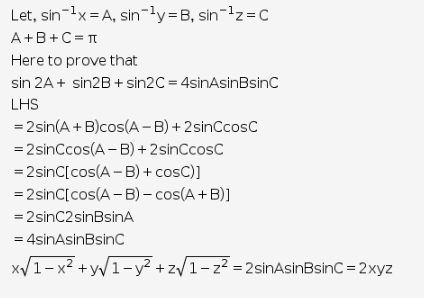



If Sin 1x Sin 1y Sin 1z Pi Prove That Cbse Class 12 Learn Cbse Forum
A = π 2 tan − 1 x cot sin B = √{(1x^2)/(2x^2)} , putting the value of sinB in eqn (2) y= √{(1x^2)/(2x^2) Answer 65K views View upvotes Answer requested by Muskan Kaur 9 6 Share Related Answer Ajesh K C Studied at Mar Athanasius College of Engineering, Kothamangalam ·Using some of the work from example 1021 EXAMPLE 1023 Evaluate Z p 1x2 dx Let x = tanu, dx = sec2 udu, so Z p 1 x 2dx = Z p 1 tan usec2 udu = Z √ sec2 usec2 udu Since u = arctan(x), −π/2 ≤ u ≤ π/2 and secu ≥ 0, so √ sec2 u = secu Then Z √ sec2 usec2 udu = Z sec3 udu In problems of this type, two integrals come upCBSE Class 12 Sample Paper for Boards Paper Summary
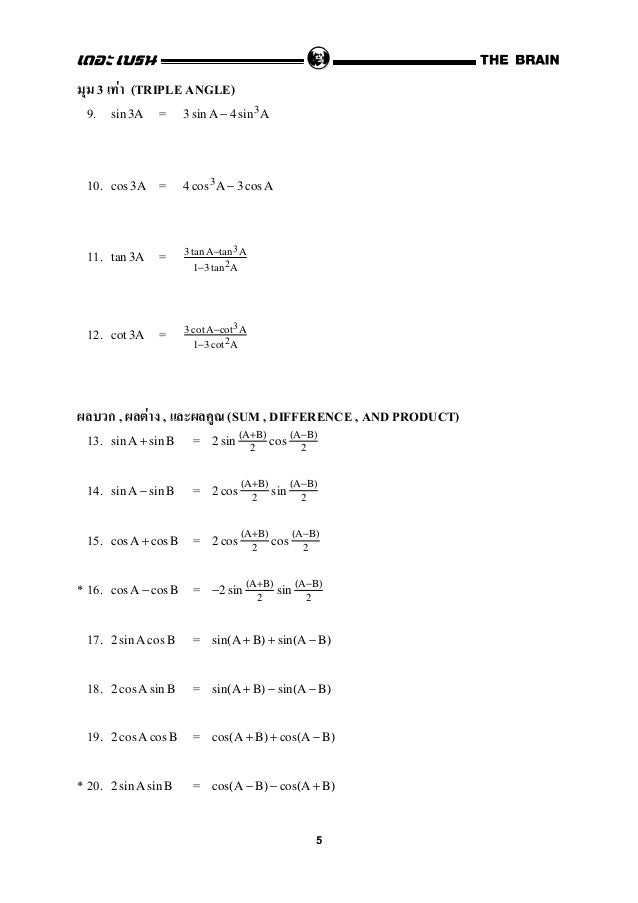







Is Sin Left Frac Pi 2 Sin Left Frac Pi 2 Cdots Sin X Cdots Right Right Frac4 Pi Sum Limits K 0 Infty Frac Sin 2k 1 X 2k 1 Mathematics Stack Exchange
Hint Use the substitution u = lnx Solution • The improper integral is defined by Z ∞ 2 1 x(lnx)p dx = lim b→∞ Z b 2 1 x(lnx)p dx The Riemann integral on the righthand side exists since the integrand is continuous on 2,b • The substitution formula with u = lnx0, π/2 For m n π/2 π/2 sin ( (2n 1)x) sin ( (2m 1)x) dx = cos (2 (n m)x) cos (nm)x x ))dx π/2 For m=n π/2 π/2 sin ( (2n 1)x) dx = 2 sinY = sin–1x –1,1 –π π, 2 2 y = cos–1x –1,1 0,π y = cosec–1x R– (–1,1) –π π, –{0} 2 2 y = sec–1x R– (–1,1) 0,π – π 2 y = tan–1x R –π π, 2 2 y = cot–1x R (0,π) Notes (i) The symbol sin–1x should not be confused with (sinx)–1 Infact sin–1x is an




Cos 1 X Sin 1 X 2 Pi 6 Youtube



Math Berkeley Edu
Formal Definitions Earlier, we used the terms arbitrarily close, arbitrarily large, and sufficiently large to define limits at infinity informally Although these terms provide accurate descriptions of limits at infinity, they are not precise mathematically2 1 x(lnx)p dx For what values of p does this integral converge?ˇ 4 is on the graph of y = sin 1 x I Therefore sin1 p 1 2 = ˇ 4 Example Evaluate sin 1(p 3=2) and sin 1(p 3=2) I sin 1(p 3=2) = y is the same statement as y is an angle between ˇ 2 and 2 with siny = p 3=2 I Consulting our unit circle, we
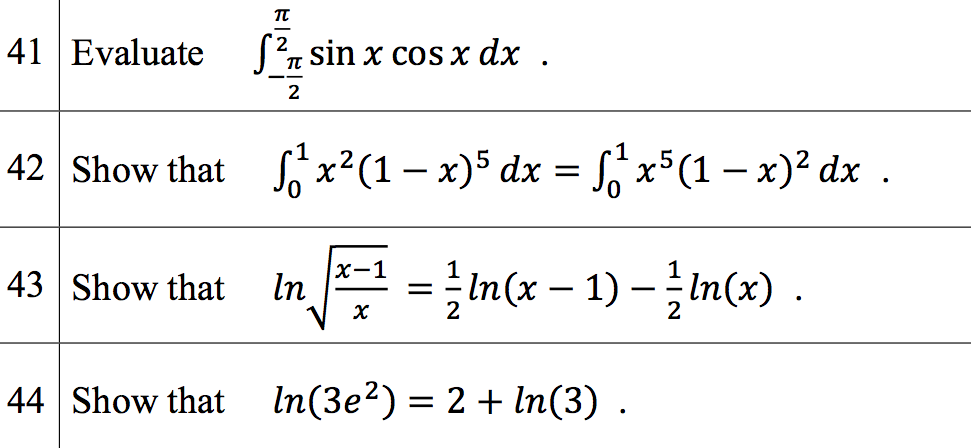



Solved Evaluate Integral Pi 2 Pi 2 Sin X Cos X Dx Show Chegg Com




Trigonometric Equations
Solutions of Sample Papers and Past Year Papers for Class 12 Boards;Answer (1 of 2) cos¹(x)cos¹(y)=π/2 cos¹(y)=π/2 cos¹(x) y=cos(π/2)cos¹(x) But we know sin¹(x)cos¹(x)=π/2 sin¹(x)=π/2 cos¹(x) y=cossin




Inverses Of Trigonometric Functions Ck 12 Foundation



Content Graphing The Trigonometric Functions



Inverse Trigonometric Functions Precalculus Ii




If Sin 1 1 X 2sin 1 X Pi 2 Then X Equal



If Y X Is A Solution Of 2 Sinx 1 Y Dy Dx Cosx And Y 0 1 Then Find The Value Of Y P 2 Studyrankersonline



Can We Write 1 Sinx As 1 Cos P 2 X Quora
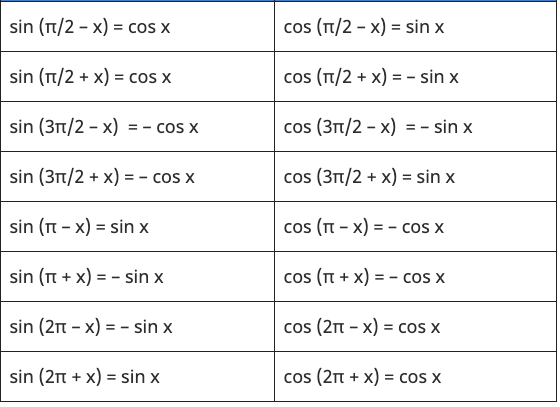



Formula Of Trigonometry Sin Cos Tan Cot Sec Cosec




Sin 1 X Cos 1 X Pi 2 Arcsin X Arcos X Pi 2 Youtube




2 Sin Inverse X Formula In Terms Of Tan Isiah Norbert




Sine Cosine Identities Periodicity Video Khan Academy
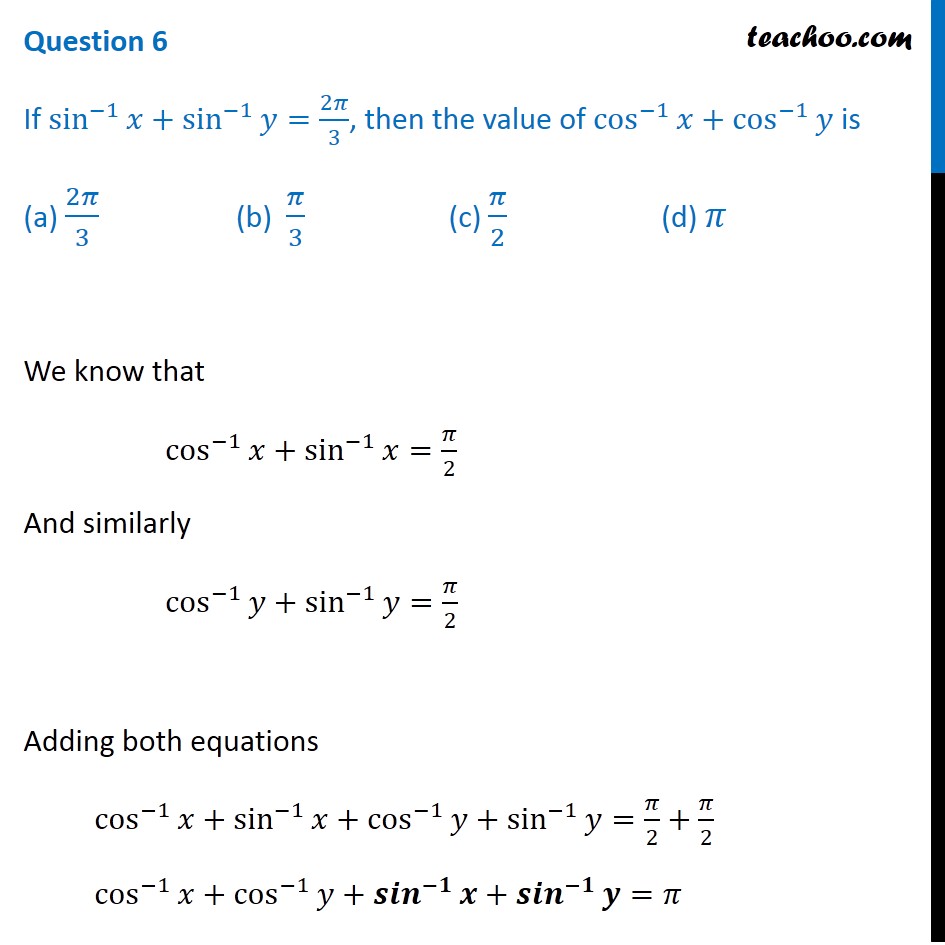



If Sin 1 X Sin 1 Y 2pi 3 Then Value Of Cos 1 X Cos 1 Y Is



Solve For X Sin 1 1 X 2 Sin 1 X P 2 Sarthaks Econnect Largest Online Education Community
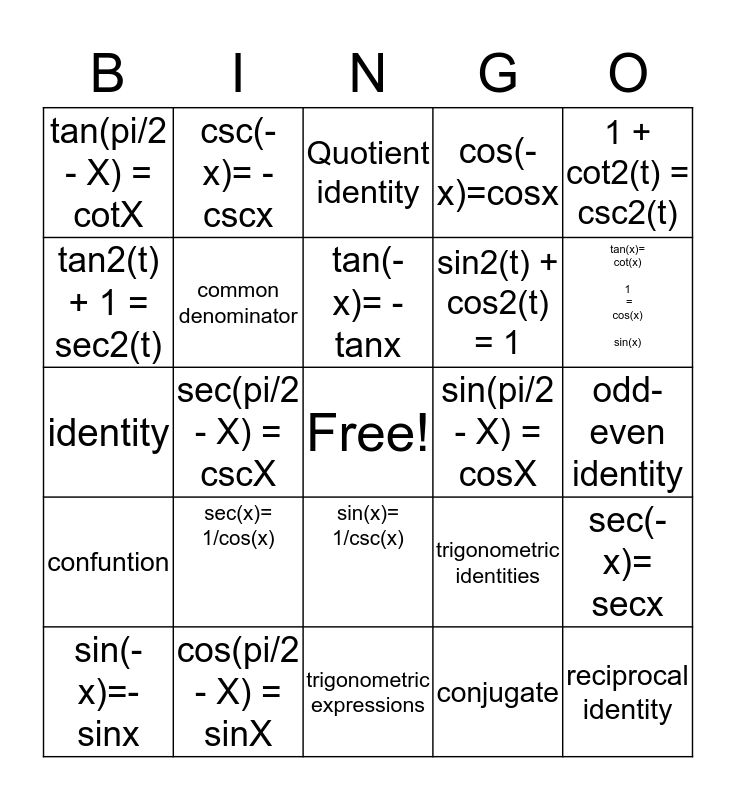



Unit 3 5 1 Bingo Card



Tinkutara Equation Editor Math Forum Question




If Sin 1 X Sin 1 Y Pi 2 T H E N 1 X 4 Y 4 X 2 X 2y 2 Y 2 Is Equal To 1 B 2 C 1 2 D None Of These




If Tan 1 X Sin 1 X Pi 2 Prove That 2x 2 1 Root 5 Maths Inverse Trigonometric Functions Meritnation Com



Www3 Nd Edu




Trig Quiz 4 6 4 7 Flashcards Quizlet
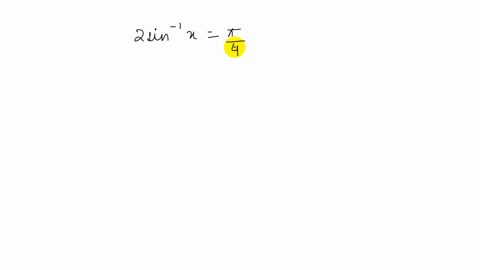



Solved Solve Y 2 Sin 1 X 5 For X In Terms Of Y
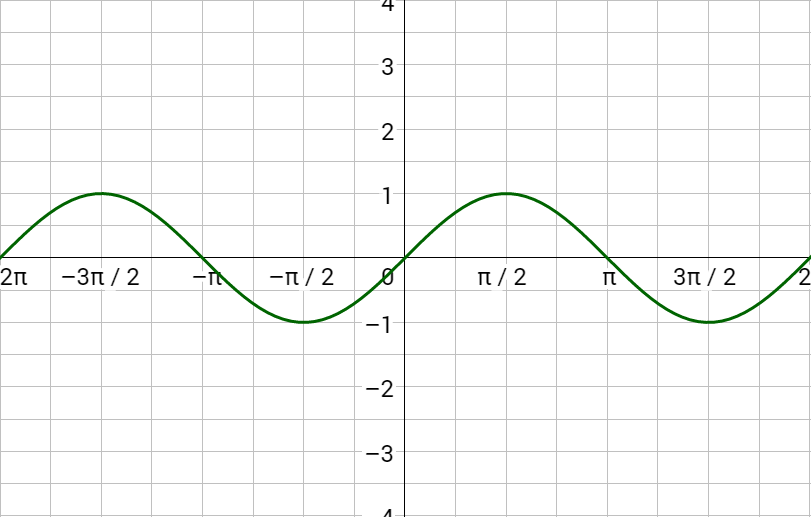



4 08 Inverse Trigonometric Functions
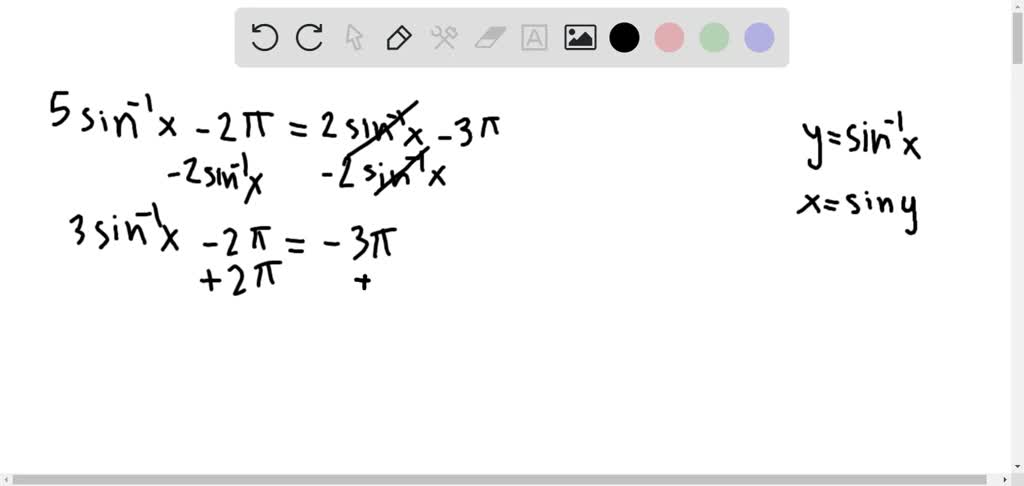



Solved In Problems 67a 74 Find The Exact Solution Of Each Equation 5 Sin 1 X 2 Pi 2 Sin 1 X 3 Pi




Sin 1 1 X 2sin 1x Pi 2 Maths Inverse Trigonometric Functions Meritnation Com
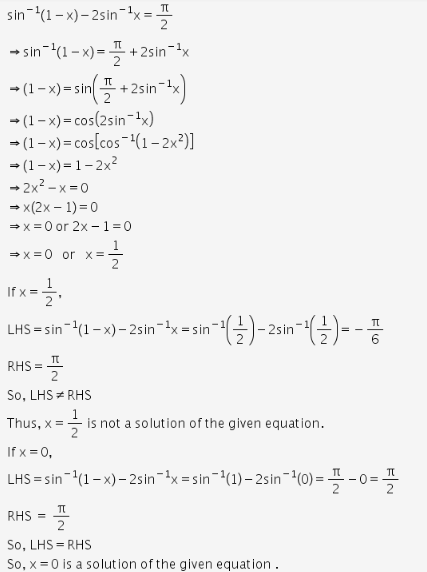



Sin 1 1 X 2sin 1x P 2 Cbse Class 12 Learn Cbse Forum




Tinkutara Equation Editor Math Forum Question



3




Find The Range Of Sin 1 X 2 Cos 1 X 2 Mathematics Topperlearning Com 8f0ac1mm




If Sin 1 X Tan 1x P 2 Prove That 2x 2 1 5 Brainly In




Show That I Sin 1 2xsqrt 1 X 2 2sin 1 X 1 Sqrt 2 Lt Xlt 1 Sqrt 2 Ii Sin 1 2xsqrt 1 X 2 2cos 1 X 1 Sqrt 2 Lt Xlt 1
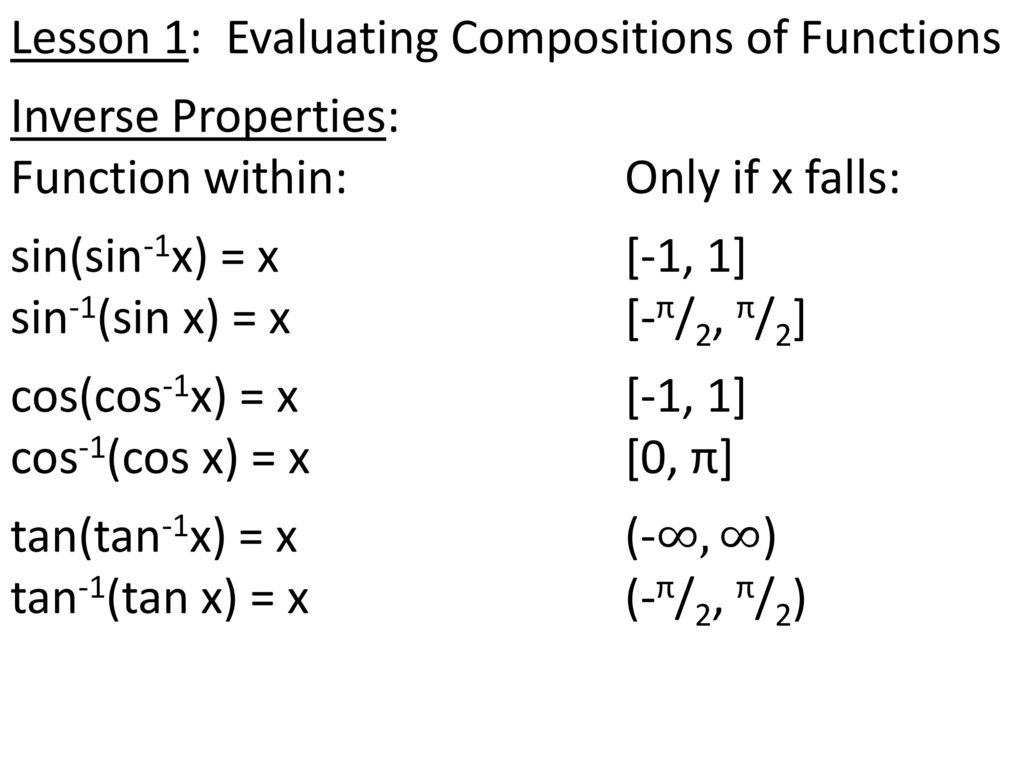



4 7 C Notes Compositions Of Functions Ppt Download




Sin 1 1 X 2sin 1x 2 Mathematics Topperlearning Com 59zpesll
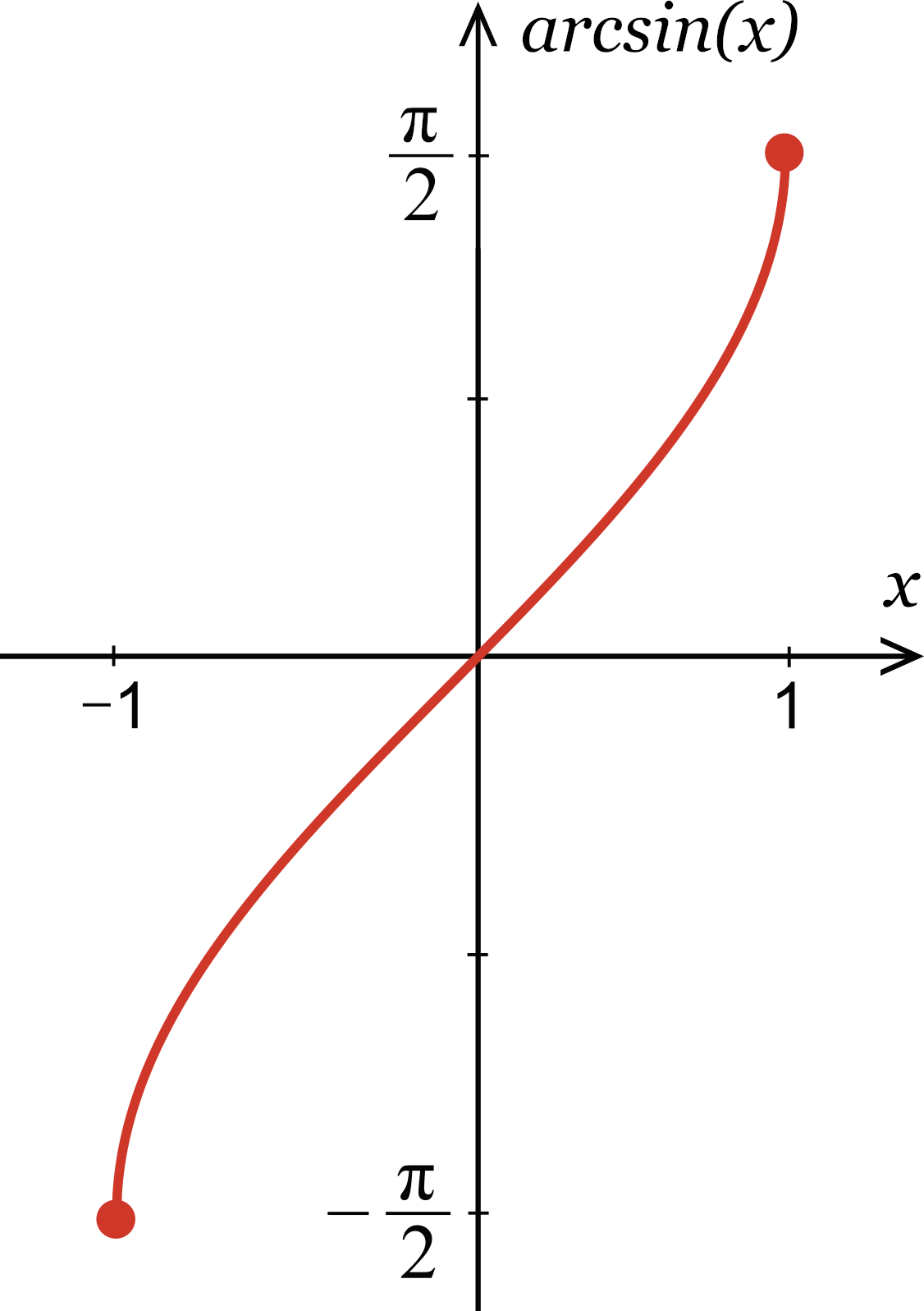



Inverse Sine Calculator Calculate Arcsin X Inch Calculator




X 1 X 2 Sin 1x 可羽 君 A P 4 B P 2 C P D 3p 2 Snapsolve




How Do You Solve Sin 1 X Tan 1 X Pi 2 Homeworklib




Sin 1 5 X Sin 1 12 X Pi 2 Youtube




Graphs Of Trigonometric Functions




If Sin 1 1 X 2 Sin 1 X Pi 2 Then X Equals N Begin Array L L Text 1 0 1 2 Text 2 0 Frac 1 2 Text 3 0 Text 4 None Of




Update Ans Sin 1 1 X 2sin 1x Pi 2 Solve For X
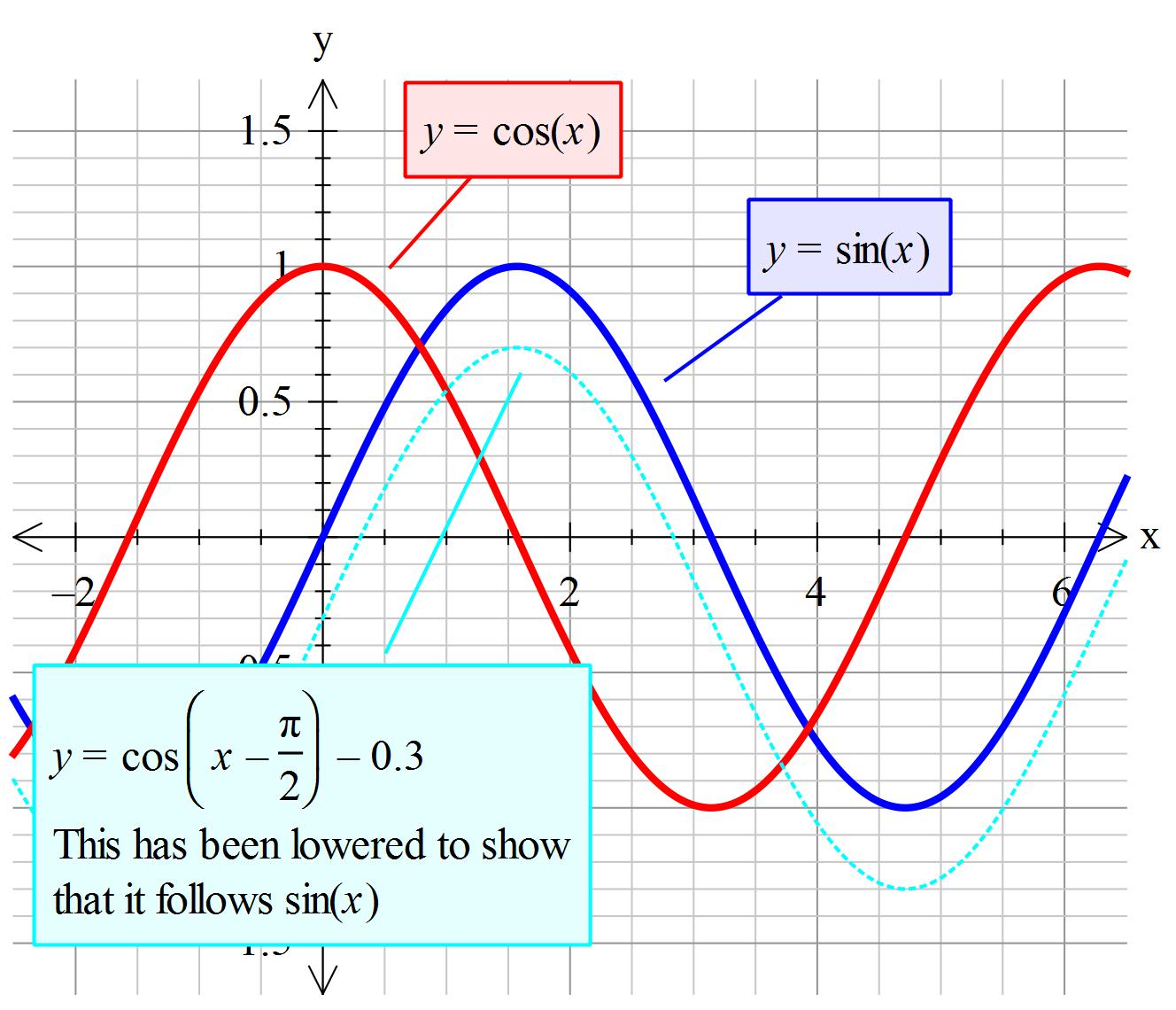



How Do You Prove Cos X Pi 2 Sin X Socratic



Prove That Sin 1 X Cos 1 X P 2 If X 1 1 Sarthaks Econnect Largest Online Education Community
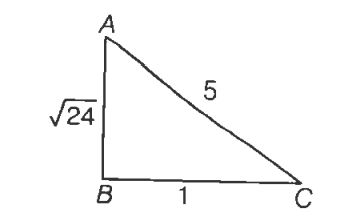



Cos 2 Cos 1 1 5 Sin 1 1 5 Is Euqal To Tardigrade In




Find The Centroid Of The Region Bounded By The Graphs Of Y Arcsin X X 0 And Y Pi 2 Study Com



1




Solved 2 Let F X 4 Sin X 1 2 Where P 2 X Chegg Com



1
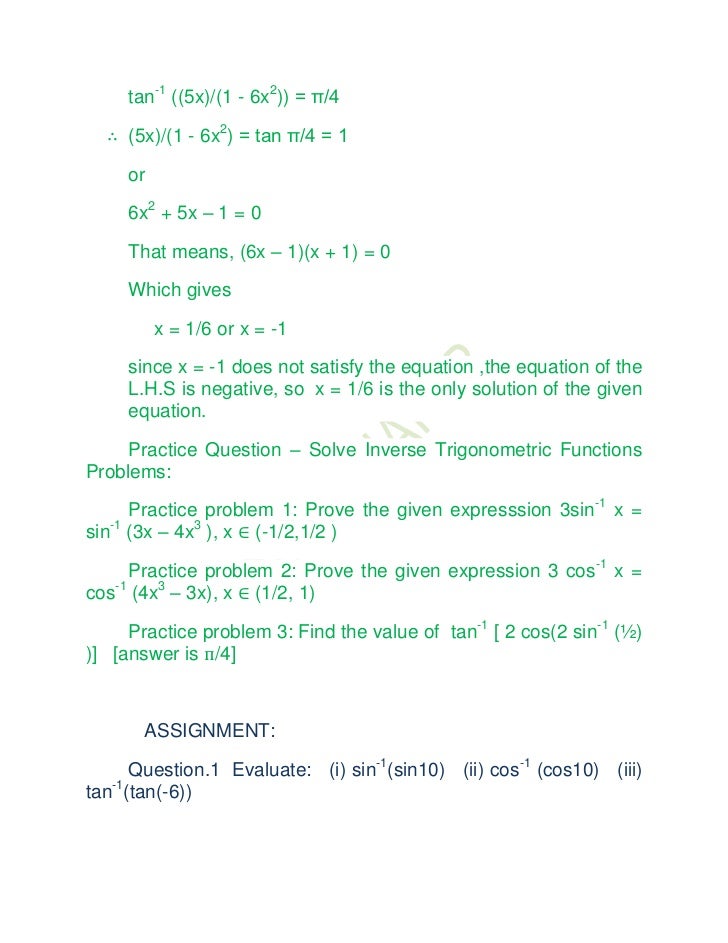



Inverse Trigonometric Functions Xii 1




Inverse Trigonometric Functions And Their Derivatives Ppt Download
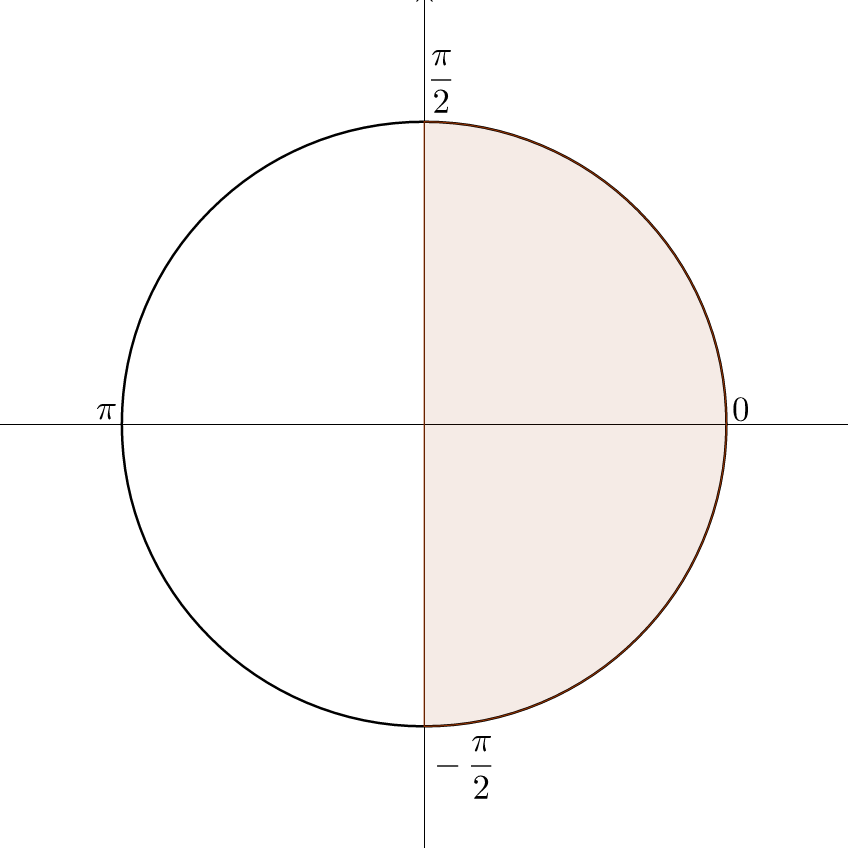



4 08 Inverse Trigonometric Functions



1 3 Trigonometric Functions




If Sin 1 X X 2 2 X 3 4 Cos 1 X 2 X 4 2 X 6 4 Pi 2 For 0 Lt X Lt Sqrt2 Then X
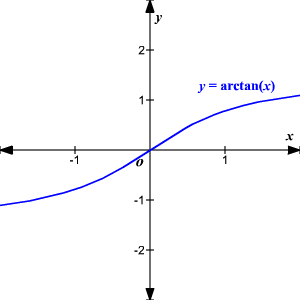



Inverse Trigonometric Functions
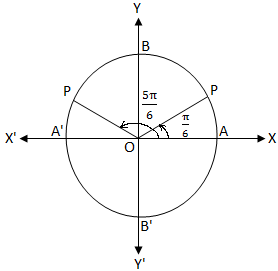



2 Sin X Minus 1 Equals 0 2 Sin X 1 0 Sin X General Solution
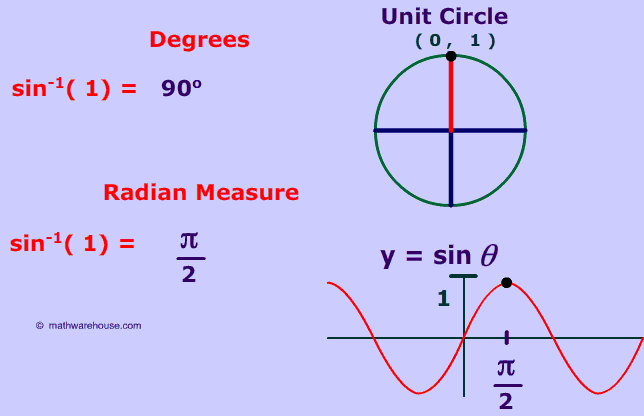



Inverse Sin 1 And 1 Special Cases Of The Inverse Of Sine Function




Consider The Following Function F X 2 Sin X 1 Frac Pi 2 Leq X Leq Frac Pi 2 Determine The Range Of The Inverse Of The Function Study Com




Graph Of Y 1 2 Sin X Pi 2 Mathtestpreparation Com
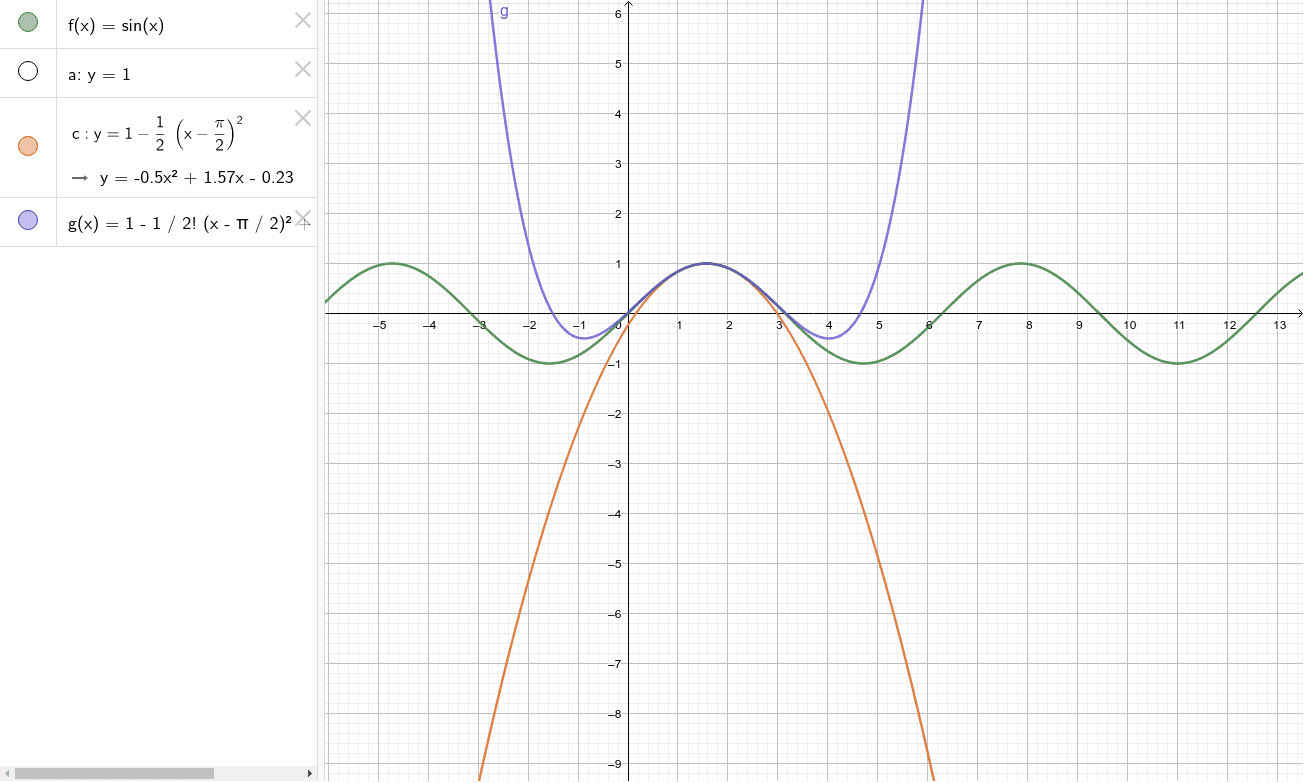



Sin X Pi 2 Geogebra
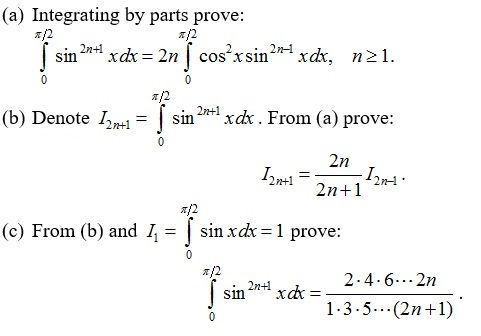



Solved Integrating By Parts Prove Integral 0 Pi 2 Sin 2n Chegg Com
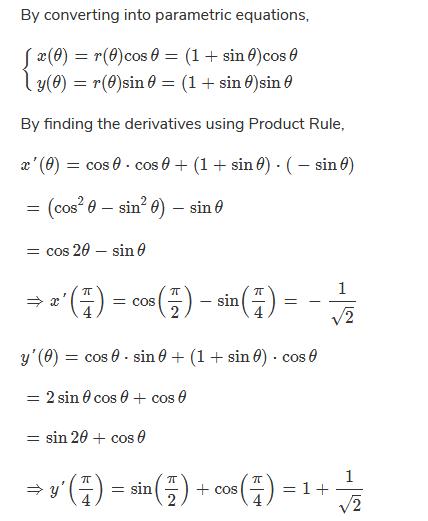



R A 1 Sinx At X P 2 Edurev Engineering Mathematics Question



Integrate Sin 1x 1 X2 3 2 Dx Studyrankersonline



The Inverse Sine Function



Sin 1 Formula



X 1 X 2 Sin 1x 可羽 君 A P 4 B P 2 C P D 3p 2 Snapsolve
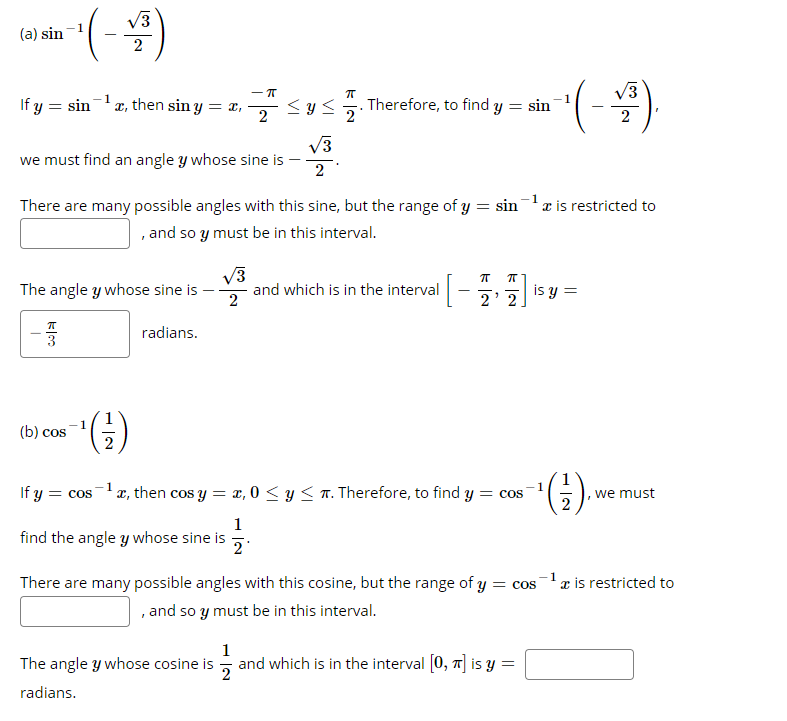



Solved A Sin 1 32 Sin 1 32 If Y Sin 1xy Sin 1x Then Chegg Com




If Sin 1 1 X 2sin 1 X Pi2 Then X Is
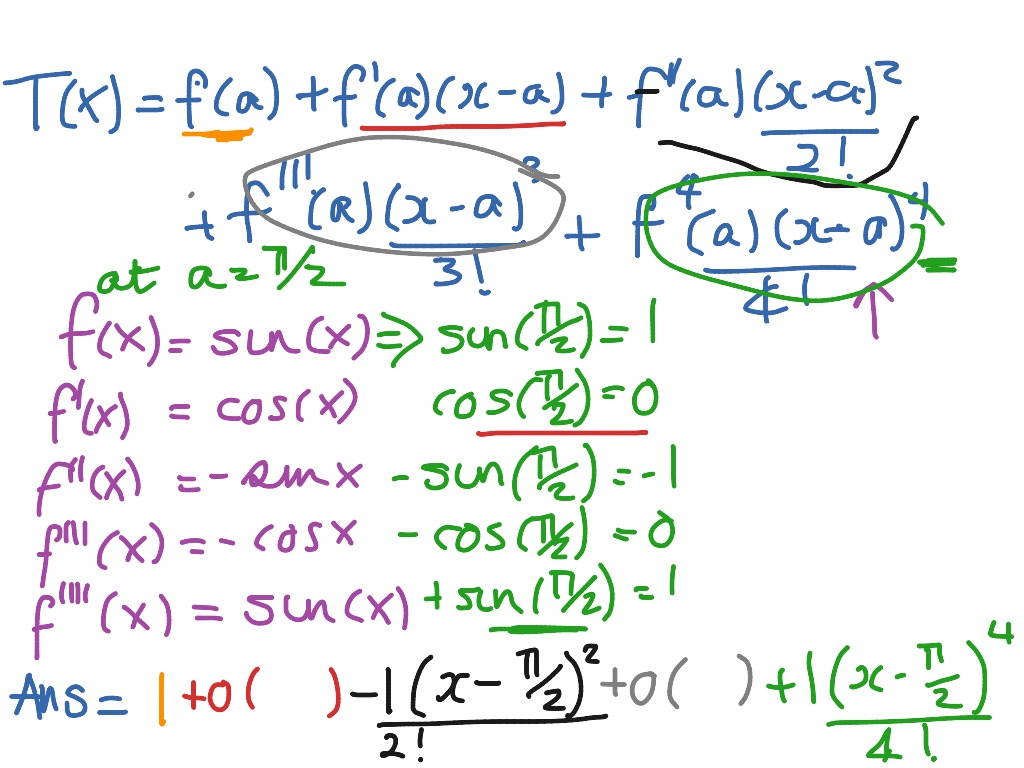



Taylor Series Of Sin X At Pi 2 Math Calculus Taylor Series Showme




5 The Value Of Frac P 2 Sin 1x Is Equal T Gauthmath
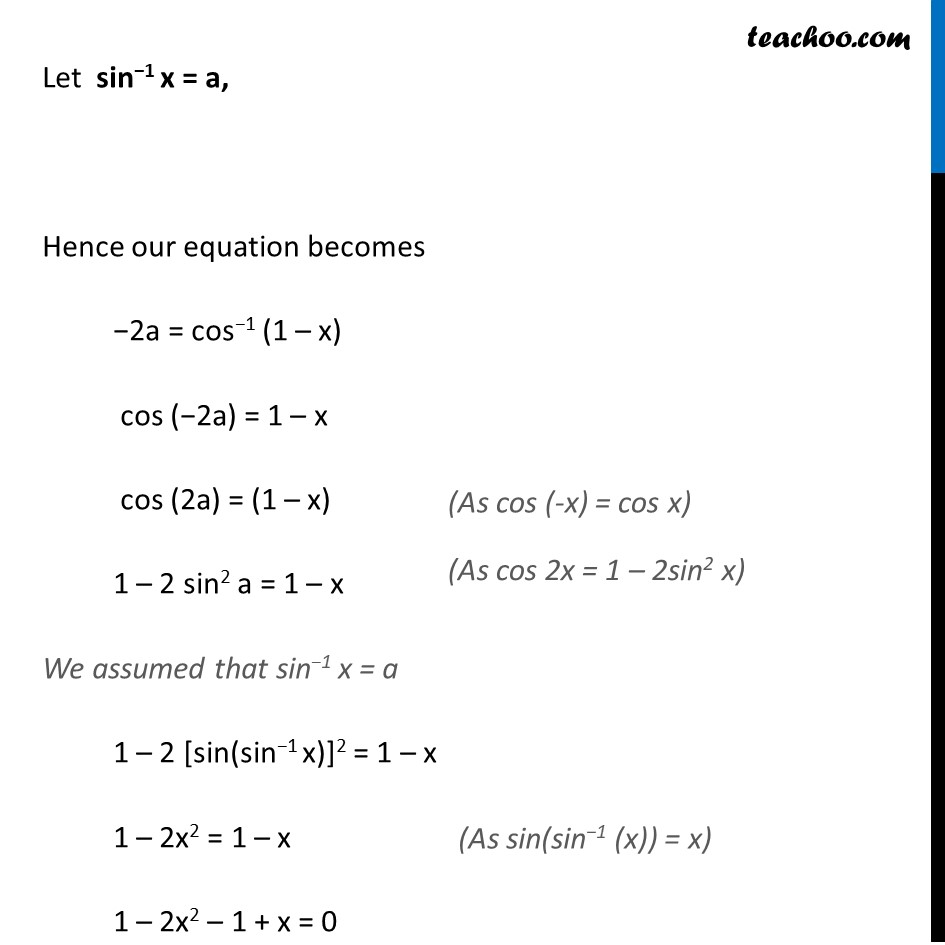



Solve Sin 1 1 X 2 Sin 1 X Pi 2 Then X Is Trigonometry Mcq



How To Plot A Graph Of 2 Sin Inverse X Quora



How To Prove That Math Sin 1 X Cos 1 X Frac Pi 2 Math Quora
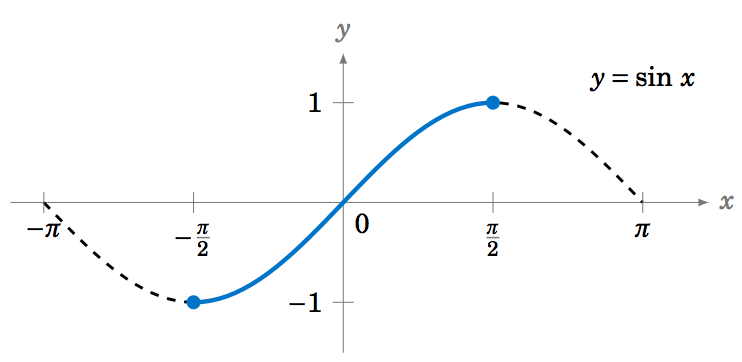



1 8 Limits And Continuity Of Inverse Trigonometric Functions Mathematics Libretexts




Prove That This Expression Is Greater Than 1 2 Newbedev




Ps Sin 1x Cos 1x Frac P 2 Gauthmath




Solve This 39 If 2 Sin 1 X 3 Cos 1x 4 Then 2 Sin 1 X 3 Cos 1x Equals A 6 Maths Inverse Trigonometric Functions Meritnation Com
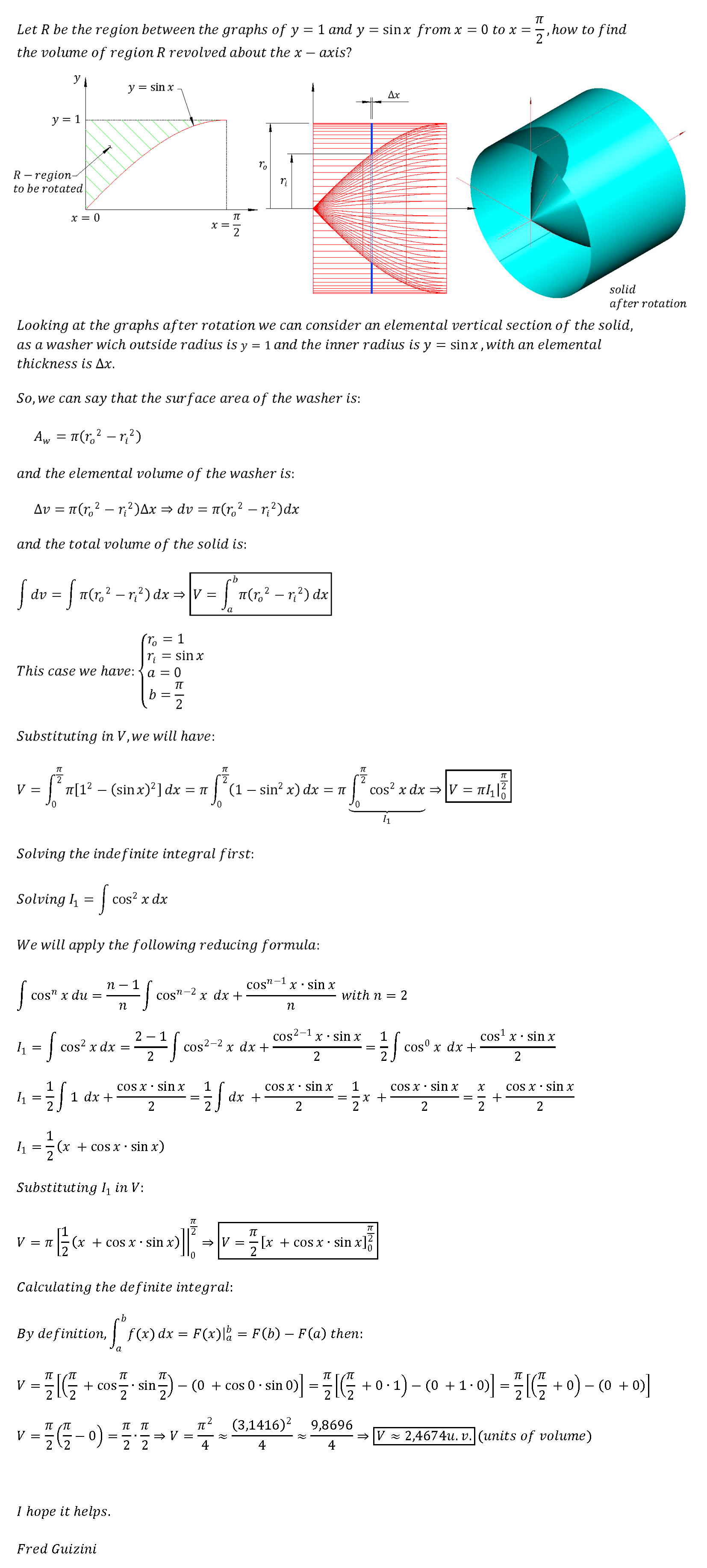



Let R Be The Region Between The Graphs Of Y 1 And Y Sinx From X 0 To X Pi 2 How Do You Find The Volume Of Region R Revolved About The X Axis Socratic
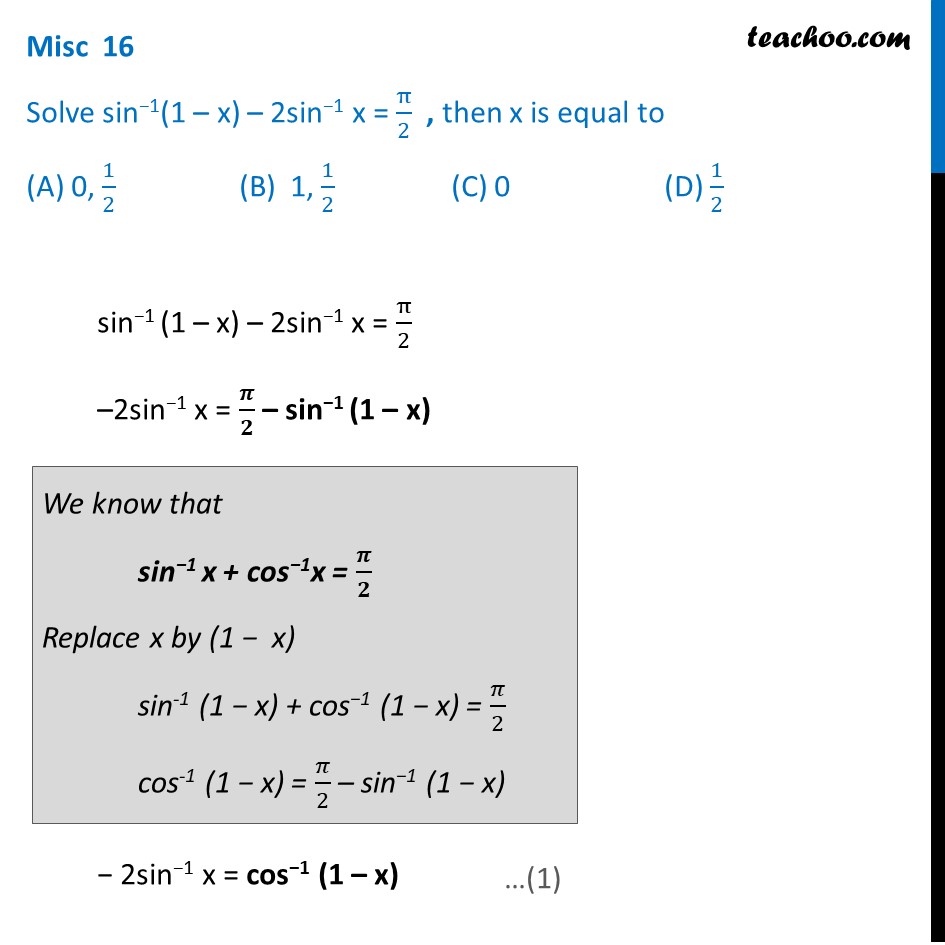



Solve Sin 1 1 X 2 Sin 1 X Pi 2 Then X Is Trigonometry Mcq
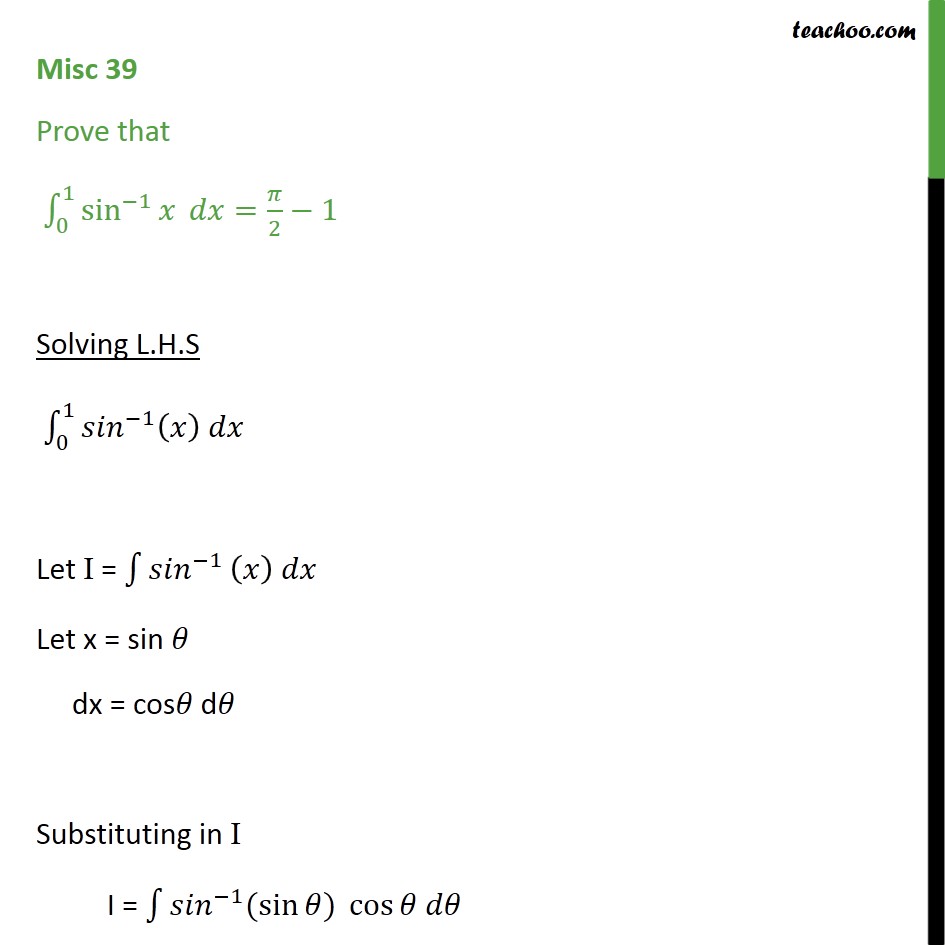



Misc 39 Prove That 0 1 Sin 1 X Dx Pi 2 1 Miscellaneous



Graphing Arcsin X Functions



0 件のコメント:
コメントを投稿